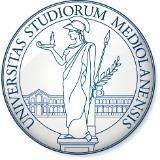预约演示
更新于:2025-05-07
Peptidoglycan x DNA
更新于:2025-05-07
基本信息
相关靶点 |
关联
2
项与 Peptidoglycan x DNA 相关的药物作用机制 DNA抑制剂 [+2] |
在研机构- |
在研适应症- |
非在研适应症 |
最高研发阶段无进展 |
首次获批国家/地区- |
首次获批日期1800-01-20 |
作用机制 DNA抑制剂 [+2] |
在研机构- |
在研适应症- |
非在研适应症 |
最高研发阶段无进展 |
首次获批国家/地区- |
首次获批日期1800-01-20 |
100 项与 Peptidoglycan x DNA 相关的临床结果
登录后查看更多信息
100 项与 Peptidoglycan x DNA 相关的转化医学
登录后查看更多信息
0 项与 Peptidoglycan x DNA 相关的专利(医药)
登录后查看更多信息
1
项与 Peptidoglycan x DNA 相关的文献(医药)2019-01-25·Journal of Natural Products2区 · 生物学
Antibacterial Aromatic Polyketides Incorporating the Unusual Amino Acid Enduracididine
2区 · 生物学
Article
作者: Donadio, Stefano ; Maffioli, Sonia I. ; Landini, Paolo ; Brunati, Cristina ; Iorio, Marianna ; Bernasconi, Alice ; Monciardini, Paolo ; Campochiaro, Laura ; Sosio, Margherita
分析
对领域进行一次全面的分析。
登录
或

生物医药百科问答
全新生物医药AI Agent 覆盖科研全链路,让突破性发现快人一步
立即开始免费试用!
智慧芽新药情报库是智慧芽专为生命科学人士构建的基于AI的创新药情报平台,助您全方位提升您的研发与决策效率。
立即开始数据试用!
智慧芽新药库数据也通过智慧芽数据服务平台,以API或者数据包形式对外开放,助您更加充分利用智慧芽新药情报信息。
生物序列数据库
生物药研发创新
免费使用
化学结构数据库
小分子化药研发创新
免费使用
